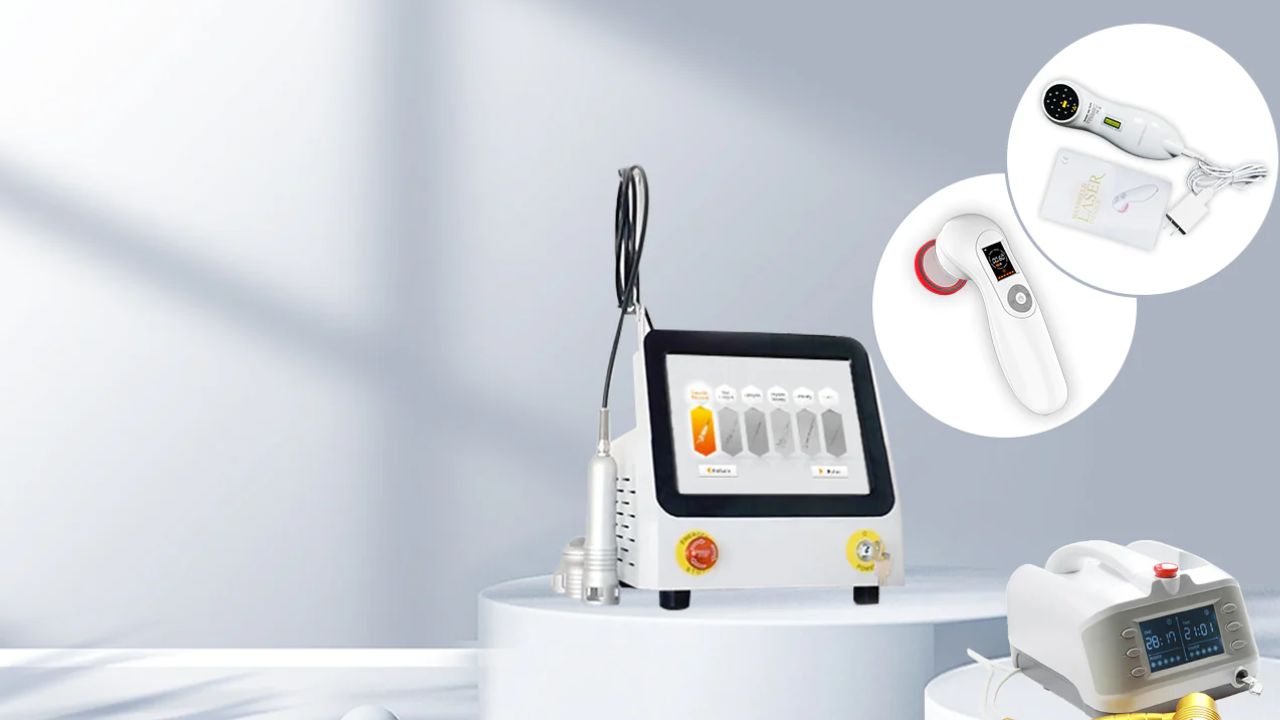Domer Technology is committed to promoting a healthy, balanced lifestyle through physical activity. These items are not meant to diagnose, treat, or prevent specific medical conditions. A photon, or beam of light, is released by a cold laser that has cellular impacts on human bodies.
Photons enter the skin and are absorbed by cells, causing the mitochondria (the cell's powerhouse) to generate additional ATP. This process boosts blood flow and cellular growth, perhaps reducing inflammation improving general cellular function, and allowing the body to recover itself. Cold laser therapy works by delivering light at specified wavelengths to the targeted tissues.
The cells absorb this light energy, which increases cellular activity, improves circulation, and causes the release of numerous biochemical components that aid in the healing process. You can visit Domer Laser for the latest information regarding laser therapy. Cold laser therapy is used to treat a variety of illnesses, wound healing, inflammation, and certain neurological disorders. It is frequently used for pain treatment.
Does Cold Laser Therapy Cause Pain?
No, Cold Laser Therapy is often painless. Unlike surgical lasers, which generate heat, cool lasers work at low levels and do not produce heat sensations. Patients may feel a gentle, relaxing warmth or tingling at the treatment location, but the technique is intended to be non-invasive and painless. Individual comfort levels may vary, but the therapy is generally well tolerated.
Potential Side Effects and Risk Factors of Cold Laser Therapy
Cold Laser Therapy, noted for its non-invasive nature and promising results, is a therapy that uses low-level lasers or light-emitting diodes (LEDs) to promote cellular activity for healing. While it is generally considered safe, it is critical to investigate potential side effects and dangers related to this treatment to make an informed decision and use it safely.
Minimal Side Effects
Cold laser therapy is well-known for its minimal side effects. Patients frequently report little to no discomfort during or after sessions. Unlike certain traditional treatments, cold laser therapy avoids the drawbacks of invasive procedures, making it an appealing option for consumers looking for non-pharmacological and gentle alternatives.
Temporary Increase in Pain
Individuals may feel a temporary increase in discomfort or soreness after their first sessions. This phenomenon, known as the "rebound effect" or the Hofmeister effect, is a transitory response while the body adjusts to the stimulation and begins to repair. This heightened sensation frequently subsides with successive treatments.
Skin Sensation and Warming
During cold laser therapy sessions, patients may experience slight warmth or tingling at the treatment site. This is normal in reaction to the therapy's increased cellular activity and improved blood circulation. It is critical to communicate these feelings to the healthcare professional to ensure that the settings are adequate for individual comfort.
Photosensitivity
Cold laser therapy exposes patients to light, and in rare situations, they may develop photosensitivity. It is best to alert healthcare providers if you have a pre-existing light sensitivity or are taking medications that may cause it. Protective measures, such as wearing eye shields, are frequently used to reduce the chance of discomfort.
Contraindications
Cold laser therapy is generally safe; however, there are some contraindications that healthcare providers must consider. For example, it should not be applied directly to malignant tumors, the thyroid gland, or the developing fetus during pregnancy. Patients with a history of epilepsy should exercise caution since some gadgets emit flashing lights.
Efficacy Variation
The efficiency of cold laser therapy varies depending on the individual and the disease. The form and duration of the ailment, as well as individual responsiveness and adherence to prescribed treatment approaches, all have an impact on results. Patients should have realistic expectations and speak with healthcare experts about potential advantages.
Limited Regulation and Standardization
Cold laser therapy lacks thorough regulation and standardization. This creates issues in assuring consistent treatment techniques and outcomes. As a result, patients must seek therapy from qualified and trustworthy healthcare experts who follow evidence-based guidelines.
Device Quality and Operator Skill
The effectiveness and safety of cold laser therapy are heavily influenced by the device's quality and the experience of the healthcare practitioner doing the treatment. FDA-approved equipment and skilled practitioners are critical for ensuring proper application and reducing potential dangers.
Final Words
Cold laser therapy is a promising and typically safe approach. While the dangers and adverse effects are small, it is critical to carefully examine contraindications. Ongoing study improves our understanding of the long-term consequences and best applications. Open communication and collaboration between patients and healthcare professionals are essential for ensuring the safe and effective incorporation of cold laser therapy into comprehensive treatment strategies.


